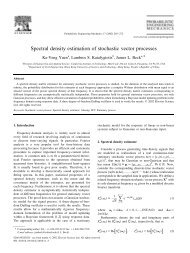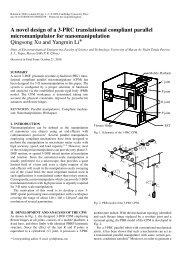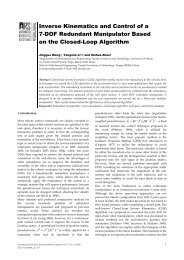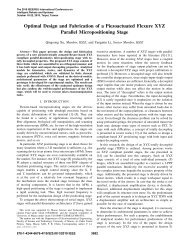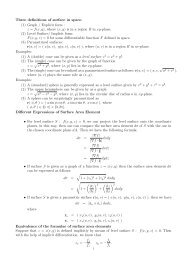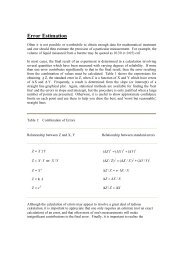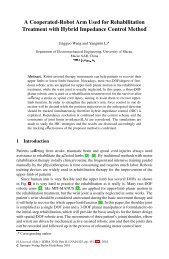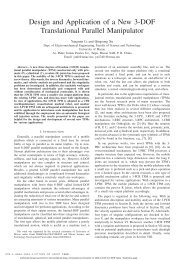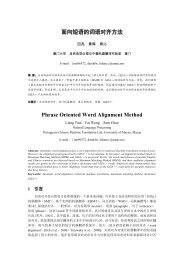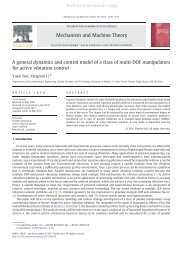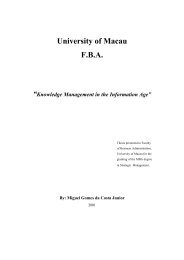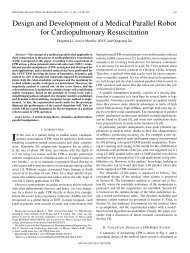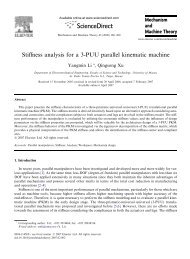lecture notes 13
lecture notes 13
lecture notes 13
Create successful ePaper yourself
Turn your PDF publications into a flip-book with our unique Google optimized e-Paper software.
.Example. Let T be the solid bounded by the paraboloidsS 1 : z = x 2 + 2y 2 and S 2 : z = 12 − 2x 2 − y 2 . Evaluate the outward fluxof . F(x, y, z) = xi + yj + zk across the boundary of T.Solution. Project the solid onto the xy-plane with its shadow R. LetQ(x, y, z) be the intersection of S 1 and S 2 , thenz = x 2 + 2y 2 = z = 12 − 2x 2 − y 2 , so 3(x 2 + y 2 ) = 12, thenx 2 + y 2 = 4. Then the image Q ′ (x, y) of Q in R satisfies the equationx 2 + y 2 = 2 2 , i.e. Q ′ lies on a circle. Inside the circular disc R, we havex 2 + y 2 ≤ 2, so it follows that x 2 + 2y 2 ≤ 12 − 2x 2 − y 2 , and henceT = { (x, y, z) | 0 ≤ x 2 + y 2 ≤ 2 2 , x 2 + 2y 2 ≤ z ≤ 12 − 2x 2 − y 2 }. Itfollows from divergence theorem that∫∫S∫∫∫F · n dS =T∇ · F dV =∫ 2π ∫ 2= 3 (12 − 3r 2 )r drdθ = 6π0 0∫∫∫ 12−2x 2 −y 2x 2 +2y 2x 2 +y 2 ≤2 2(1 + 1 + 1) dV[6r 2 − 3 4 r4 ] 20= 6π(24 − 12) = 72π.. . . . . .



